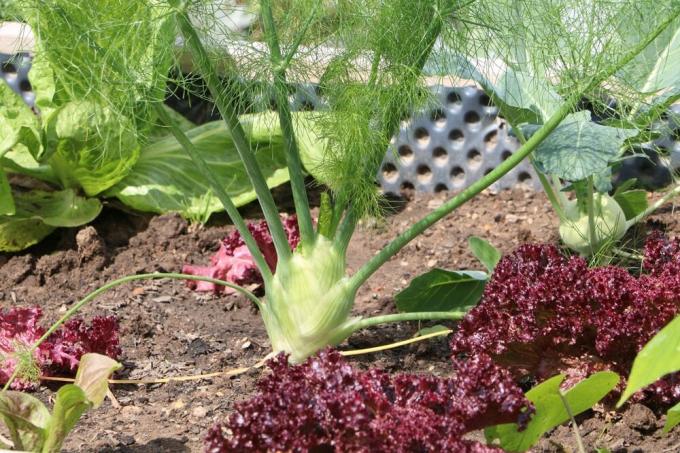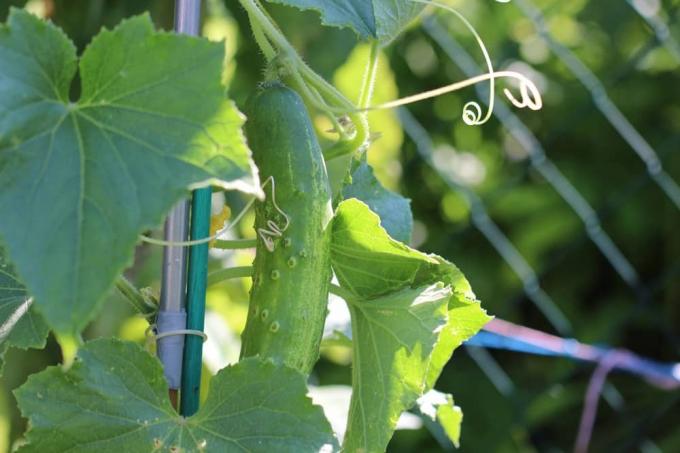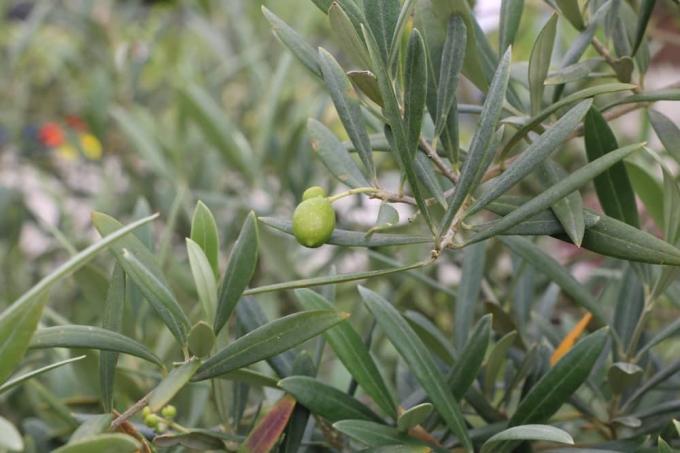

Table of contents
- Effect
- Instructions for fennel tea
- Fennel tea for babies and children
- Grow fennel yourself
Fennel tea is said to have many good properties and has long been a very popular home remedy, to treat colds and complaints in the digestive tract gently and purely herbal or to support them treat. In addition, it is very easy to make the tea from fresh fennel yourself and even to grow the vegetable fennel yourself. We help with tips and recipes.
Effect
The supposed effect of fennel tea is supposed to loosen mucus in the bronchi and the rest of the airways, calm the stomach and relieve flatulence. Therefore, the tea is already given to infants when they suffer from flatulence or colic. However, it is also diuretic and gently laxative. Therefore, large amounts of the tea should not be drunk.
Instructions for fennel tea

If you want to make the fennel tea yourself, you need the fennel seeds or fennel fruits. Because these contain the essential oils and secondary plant substances, such as fenchone and trans-anethole. In addition, the seeds contain sterols, phenolic acids, flavonoids and coumarins.
However, tea cannot be brewed from leaves. But they contain vitamins and minerals, secondary plant substances and dietary fiber just like the tuber.
If you don't have fennel on the balcony or in the garden, you can buy the seeds online or in stationary stores to make your own tea. The following utensils are required for this:
- mortar and pestle
- tea strainer
- pot or cup
- tablespoon
The preparation proceeds as follows:
- Thoroughly crush one tablespoon of fennel seeds per cup in a mortar and pestle. The seeds should no longer be recognizable as fennel fruits. The finer they are ground, the more essential oils are released.
- The crushed fennel seeds are placed in a tea strainer and poured over with boiling water. 250 milliliters of water should be calculated per cup.
- After a brewing time of seven to ten minutes, the tea strainer can be removed.
Tip:
Since fennel tea can be very aromatic and sometimes slightly bitter, it is advisable to sweeten it with sugar or honey. Of course, this does not apply to diabetics. A finer taste and an increased effect against flatulence and cramps can be achieved if caraway and aniseed are added.
Fennel tea for babies and children
Babies and toddlers can also get the tea to prevent or gently relieve flatulence and colic. However, care must be taken not to give too much tea. From the first day of life to the 6th month it should not be more than 50 milliliters per day. The tea is diluted and of course must not be too hot.
Grow fennel yourself
Although tea cannot be made from the leaves of the fennel, more than one recipe can be prepared from fresh fennel. It is particularly practical to grow the vegetable fennel yourself. This is also possible on the balcony or in the garden.

You should only pay attention to the following points:
- Fennel seeds are grown indoors or in a greenhouse from mid-March. They should be placed in potting soil and placed in a bright spot. The substrate must always be kept slightly moist, but should not be wet. A germination temperature of around 18 to 22°C is ideal.
- After about three weeks, the seeds should have germinated and the shoots should already be a few centimeters high. When they are about five centimeters high, they are pricked out. This means that the plants from the cultivation container are placed in larger pots, boxes or buckets and should be about 30 centimeters apart. Germs that are too weak can be removed in the process. In addition, potting soil or another nutrient-rich substrate should be used. For example, potting soil with a compost content is recommended.
- After another three weeks at around 20 °C, it can be planted outdoors or placed outside in the planters. Covering with garden fleece makes sense until there is no threat of late frost. The location should be sunny, warm and sheltered, as fennel originally comes from the Mediterranean region.
- The bulbs and seeds for the tea can be harvested between September and October. Tubers harvested later often become tough, dry and bitter.
The fennel seeds should be kept dry and cool so that they can last for a few months. They should also be checked from time to time so that mold growth is detected at an early stage.
 garden editorial
garden editorial I write about everything that interests me in my garden.
Learn more about processing garden vegetables

Freeze Eggplant | 4 storage tips
The club-shaped fruits of the aubergine, also known as eggplant, can be processed into numerous delicious dishes. Especially when fried, it reveals its pleasant, buttery-tender taste. However, it is not suitable for raw consumption and has a limited shelf life when fresh.

Is eggplant edible raw or poisonous?
In this country, it is mainly known as a shiny, black-purple, club-shaped fruit, the aubergine (Solanum melongena). Due to its formerly hen's egg-like shape, it still bears the nickname 'eggfruit'. It is low in calories, delicious and healthy. It is even said to have a healing effect.

Pickling cucumbers: information on cultivation, harvesting and pickling recipes
Pickles are crunchy, fresh, salty, sour or flavored with mustard in a delicious preserve that's easy to grow and prepare at home. Of course, a few things have to be considered, because the plants are sensitive as easy as the culture is. Information for all steps from cultivation to preparation can be found here.

441 guinea pig names from cute to funny
A suitable guinea pig name can not only be a fun or cute addition, but also a way to create a special bond with your little furry friend.

Fruits on the olive tree - when are the olives ready for harvest?
The olive tree is very popular as a Mediterranean pot plant. However, very few expect to actually harvest olives at some point. But if you live in a warm region of Germany and don't buy your olive tree in the supermarket, you can hope. From the blossom to the olive harvest, that's how it works.

Blackbird - profile, food and help in winter
If you can hear a rustling in the leaves or a beautiful bird song in the garden, then in most cases it is a blackbird. While the bird used to be shy and secluded in forests, it has become more accustomed to close proximity to houses and even nests there.



